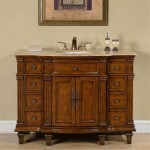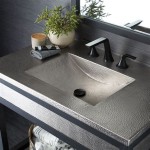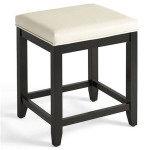Floating Vanity With Vessel Sink: A Guide to Choosing and Installing
Floating vanities with vessel sinks have become increasingly popular in modern bathroom design due to their sleek, contemporary aesthetic and space-saving functionality. These vanities appear to float off the floor, creating an illusion of more space and lightness in the bathroom. Vessel sinks, which sit above the countertop rather than being recessed into it, add a unique and stylish touch.
Choosing a Floating Vanity
When selecting a floating vanity, consider the following factors:
- Size: Measure the available space in your bathroom and choose a vanity that fits comfortably. Consider the width, depth, and height of the vanity.
- Material: Floating vanities are typically made from materials such as wood, laminate, metal, or stone. Choose a material that complements your bathroom's overall design and meets your durability requirements.
- Storage: Floating vanities often have limited storage space, so consider the number of drawers or cabinets you need. Look for vanities with soft-close mechanisms for a quieter and more sophisticated experience.
- Style: Floating vanities come in various styles, from minimalist to traditional. Choose a vanity that matches the overall aesthetic of your bathroom.
Choosing a Vessel Sink
Vessel sinks are available in a wide range of materials, shapes, and sizes. Here are some factors to consider:
- Material: Vessel sinks can be made from materials such as ceramic, glass, stone, or metal. Choose a material that is durable, easy to clean, and complements the vanity.
- Shape: Vessel sinks come in various shapes, including rectangular, oval, and round. Choose a shape that fits the size and style of your vanity.
- Size: The size of the vessel sink should be proportional to the vanity. Ensure that the sink does not overwhelm the vanity or make it difficult to use.
- Faucet Compatibility: Consider the type of faucet you will be using with the vessel sink. Some sinks require a specific type of faucet, such as a wall-mounted or countertop-mounted faucet.
Installation
Installing a floating vanity and vessel sink requires careful planning and attention to detail.
- Wall Preparation: Ensure that the wall where the vanity will be installed is strong enough to support the weight of the vanity and sink.
- Mounting Brackets: Install the mounting brackets on the wall according to the manufacturer's instructions. These brackets will hold the vanity in place.
- Vanity Installation: Carefully lift the vanity onto the mounting brackets and secure it according to the manufacturer's instructions.
- Vessel Sink Installation: Place the vessel sink on the vanity and connect the plumbing fixtures.
- Faucet Installation: Install the faucet and connect it to the water supply.
- Finishing Touches: Apply caulk around the sink and vanity to prevent water damage and enhance the aesthetics.
Benefits of Floating Vanity With Vessel Sink
- Space-Saving: Floating vanities create the illusion of more space in the bathroom by eliminating bulky cabinetry on the floor.
- Contemporary Aesthetic: The sleek and modern design of floating vanities and vessel sinks adds a touch of style to any bathroom.
- Easy Cleaning: The open space beneath the vanity makes it easy to clean the floor and any spills or water droplets.
- Increased Hygiene: Floating vanities reduce the accumulation of dust and dirt on the floor, improving bathroom hygiene.

Modern 31 Floating Vanity Sink For Bathroom Single Vessel Cabinets Homary

Vama Modern Home Decor Floating Bathroom Vanities With Two Vessel Sinks And White Countertop

Dayden Floating Vanity 30 55 O N

35 Floating Bathroom Vanity With Sintered Stone Countertop Homary

Mint Green Floating Vanity With Vessel Sink Oppolia

Live Edge Sink Vanity With Black Herringbone Tiles Contemporary Bathroom

35 Quot 40 Modern Floating Bathroom Vanity Set With Single Sink White And

Floating Wire Brushed Oak Sink Vanity With Vessel Transitional Bathroom

Bellezza Floating Vanity 24 60 O N

Gold Veneer Floating Sink Vanity With Oval Vessel Eclectic Bathroom







